Is It Possible to Socialize a Feral Cat?
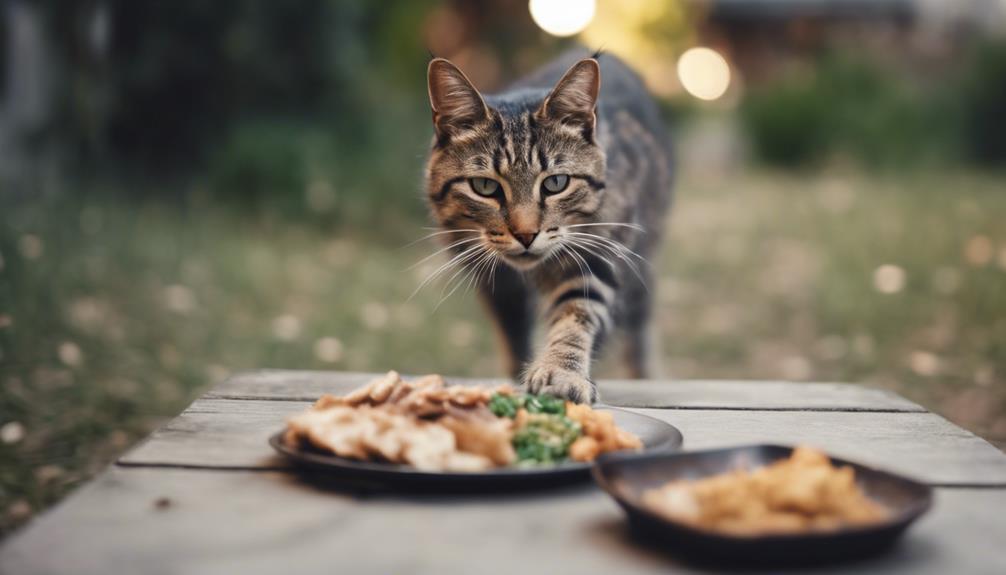
This process involves gradually gaining the cat's trust through consistent interactions and positive reinforcement.
Over time, the feral cat can learn to feel safe and secure in a home environment, forming a strong bond with its caregivers.
Understanding Feral Cat Behavior
Feral cats exhibit instinctual behaviors that are distinct from domesticated cats. Understanding these behavioral cues is crucial when attempting to socialize them. Feral cats often display fear, aggression, and a strong sense of independence due to their lack of human interaction. These socialization challenges can make the process more difficult but not impossible.
When dealing with feral cats, it's essential to recognize their body language and vocalizations as behavioral cues. Hissing, growling, flattened ears, and dilated pupils are signs of fear or aggression. It's vital to approach them calmly and patiently to slowly build trust and reduce their stress levels.
Socializing feral cats requires time, dedication, and a gentle approach. By respecting their boundaries and creating a safe environment, individuals can gradually help these cats adjust to human interaction. Patience is key in overcoming the socialization challenges that feral cats present.
The Importance of Patience

Exercising patience is crucial when socializing feral cats, as it allows for gradual trust-building and reduces stress levels in these animals. Feral cats are often wary of human interaction due to their wild nature and lack of socialization. Patience is key in this process, as it takes time for them to learn to trust humans and feel comfortable in their presence. Rushing this delicate process can lead to increased stress and anxiety in the cats, hindering any progress made.
To illustrate the importance of patience in socializing feral cats, consider the following table:
| Importance of Patience in Socializing Feral Cats | Examples |
|---|---|
| Allows for gradual trust-building | Spending time near the cat without direct contact |
| Reduces stress levels in feral cats | Providing a safe and quiet environment for the cat |
| Helps in creating a secure and comfortable space | Using gentle tones and movements around the cat |
| Encourages positive associations with humans | Offering treats and rewards for calm behavior |
| Enables slow progress in socialization efforts | Allowing the cat to set the pace of interactions |
Building Trust Through Feeding
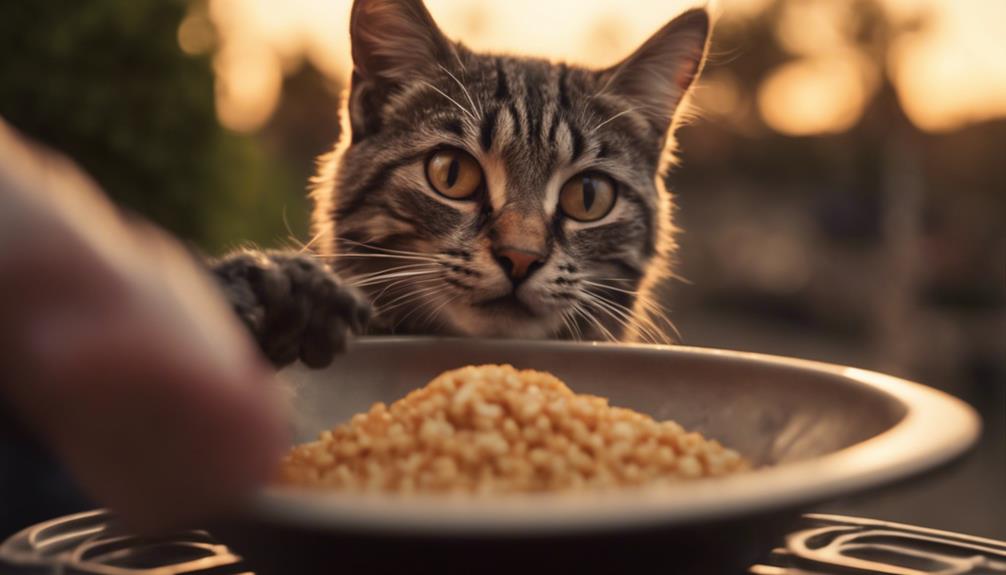
Building trust through feeding plays a crucial role in socializing feral cats. Trust building exercises and consistent feeding routines are key components in establishing a bond with these cautious creatures. Here are five essential tips to help build trust through feeding:
- Start with Regular Feeding Times: Establishing a routine helps feral cats feel safe and secure.
- Use Tempting Foods: Offering delicious treats can entice the cat to approach and associate you with positive experiences.
- Maintain a Safe Distance: Initially, keep a respectful distance to avoid scaring the cat, gradually moving closer over time.
- Practice Patience: Feral cats may take time to trust humans, so be patient and allow them to approach at their own pace.
- Offer Gentle Interactions: Speak softly and move slowly to avoid startling the cat, creating a calm and inviting environment during feeding sessions.
Gradual Introduction to Human Contact
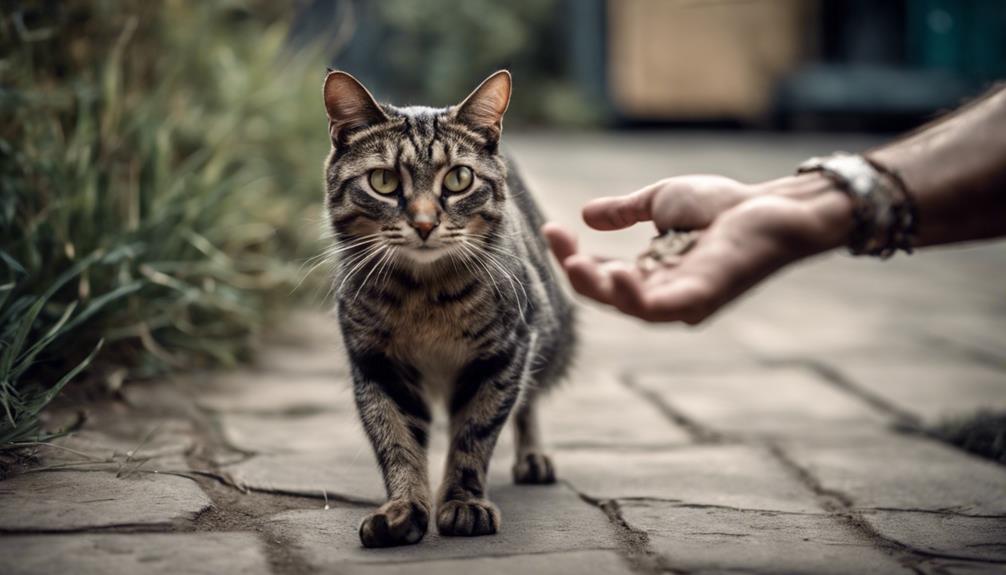
Introducing feral cats to human contact gradually is essential for building trust and fostering a positive relationship. Trust building is a delicate process that requires patience and understanding. Initially, it's crucial to keep interactions brief and non-threatening. Sitting near the cat without making direct eye contact can help them acclimate to human presence without feeling overwhelmed. Slow progress is key; forcing interactions or moving too quickly can cause the cat to retract and hinder the socialization process.
Using treats can be beneficial in associating human contact with positive experiences. Placing treats near the cat and gradually moving closer as they become more comfortable can help in establishing trust. Positive reinforcement, such as gentle petting or soft spoken words, can also aid in creating a bond. It's important to respect the cat's boundaries and avoid pushing them beyond their comfort level. By gradually introducing human contact and respecting the cat's pace, a feral cat can learn to trust and form a rewarding relationship with humans.
Creating a Safe Indoor Environment
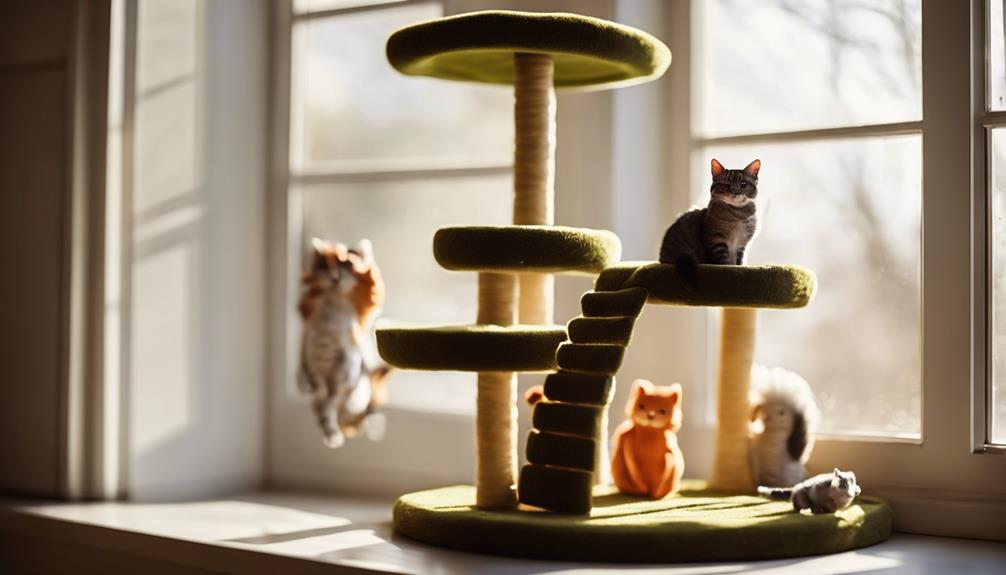
When socializing a feral cat, creating a safe indoor environment is crucial. Safe hiding spots provide security for the cat to retreat to when feeling overwhelmed.
Enrichment activities and proper litter box placement help ensure the cat's physical and mental well-being.
Safe Hiding Spots
Creating a safe indoor environment for a feral cat involves providing strategically placed hiding spots where the cat can feel secure and comfortable. These hiding spots are essential for the cat to retreat to when feeling overwhelmed or scared.
To ensure the feral cat's well-being, consider the following:
- Cozy Cat Caves: Provide small enclosed spaces where the cat can curl up and relax.
- Tall Cat Trees: Offer vertical spaces for climbing and observing the environment from a safe distance.
- Cardboard Boxes: Simple, inexpensive hiding spots that can be easily replaced.
- Soft Blankets or Towels: Comfortable materials that offer warmth and security.
- Quiet Corners: Designate peaceful areas away from high-traffic zones for the cat to retreat to.
Enrichment Activities
After setting up safe hiding spots for the feral cat, ensure its well-being by engaging in enriching activities that promote a safe indoor environment. Interactive toys and puzzle feeders can help keep the cat mentally stimulated and physically active, reducing stress and boredom. Here is a table with examples of interactive toys and puzzle feeders:
| Interactive Toys | Puzzle Feeders |
|---|---|
| Feather wands | Food-dispensing balls |
| Laser pointers | Interactive treat puzzles |
| Catnip-filled toys | Maze feeders |
Litter Box Placement
Proper placement of the litter box is crucial for establishing a comfortable and hygienic indoor environment for the feral cat. When considering the litter box placement, it's essential to understand the cat's preferences and behaviors. Here are some tips to help you set up the litter box effectively:
- Keep the litter box in a quiet and easily accessible location.
- Ensure there's more than one litter box if you have multiple cats.
- Place the litter box away from their feeding area.
- Use unscented litter to avoid overwhelming the cat's sensitive sense of smell.
- Regularly clean and maintain the litter box to encourage consistent use.
Socialization Techniques and Tips
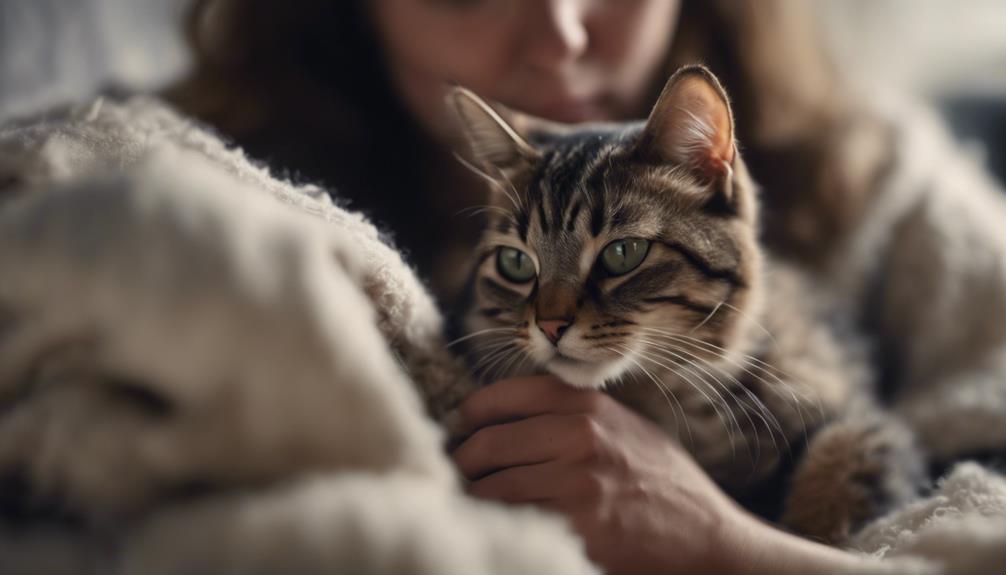
Using patience and gentle persistence, you can gradually help a feral cat become more comfortable with human interaction. Positive reinforcement and consistent routines are key in the socialization process. By creating a safe and predictable environment, you can build trust with the cat and encourage positive behaviors.
To effectively socialize a feral cat, consider the following techniques and tips:
| Technique/Tips | Description |
|---|---|
| Slow Approach | Approach the cat calmly and quietly. |
| Food Incentives | Use treats to create positive associations. |
| Playtime | Engage in interactive play sessions. |
| Safe Spaces | Provide hiding spots for the cat to feel secure. |
| Gradual Touch | Slowly introduce petting to build trust over time. |
Celebrating Progress and Milestones
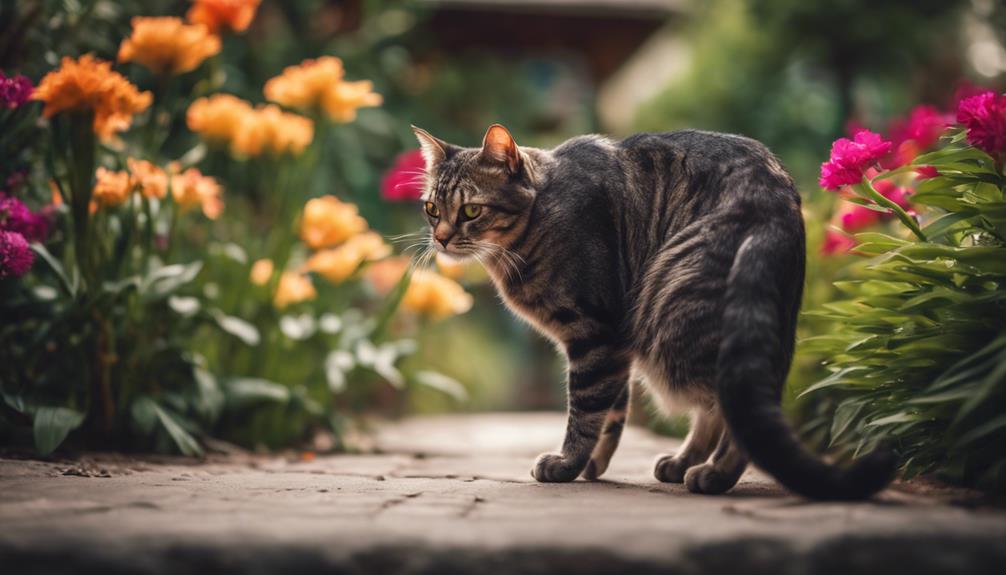
To acknowledge the progress made in socializing a feral cat, it's important to celebrate milestones along the way. Each step towards behavior modification and socialization success is a reason to rejoice and continue the journey of helping these cats become more comfortable around humans.
Here are five ways to celebrate these milestones:
- Throw a 'Pawsitively Progressing' Party: Invite friends and volunteers involved in the cat's socialization journey to celebrate the achievements made.
- Create a Photo Collage: Document the cat's transformation through pictures, creating a visual representation of their progress.
- Give Treats and Affection: Reward the cat with their favorite treats or toys when they exhibit positive behaviors.
- Share Success Stories: Inspire others by sharing stories of successful socialization to encourage more people to help feral cats.
- Keep a Journal: Maintain a journal to track milestones, setbacks, and breakthroughs, providing a record of the cat's development.
Frequently Asked Questions
What Are Some Common Misconceptions About Feral Cats?
Common misconceptions about feral cats include the belief that they are all aggressive or unadoptable. Through TNR programs, feral cat colonies can be managed, providing care for community cats and helping dispel these myths.
How Can I Help a Feral Cat Without Trying to Socialize It?
Helping a feral cat without socializing it involves supporting Trap-Neuter-Release programs and community feeding efforts. These initiatives provide essential care, control overpopulation, and ensure the well-being of feral cats while respecting their independent nature.
Are There Any Specific Breeds of Cats That Are Easier to Socialize Than Others?
Certain cat breeds, like Siamese and Maine Coons, tend to have friendlier temperaments, making them easier to socialize. However, each cat is unique, and challenges may still arise regardless of breed when it comes to socializing felines.
Can Feral Cats Ever Fully Adjust to Living Indoors?
Adjusting feral cats to indoor living poses challenges due to their wild nature. Progress in socialization can vary, requiring patience and understanding. With time and care, some feral cats can adapt to indoor life, enjoying companionship and comfort.
What Are Some Signs That a Feral Cat Is Ready to Be Adopted Into a Home?
In the quest to adopt a feral cat, signs of readiness include increased interaction, purring, and relaxed body language. Trust-building and gentle socialization techniques play a vital role in transitioning these cats into loving homes.











